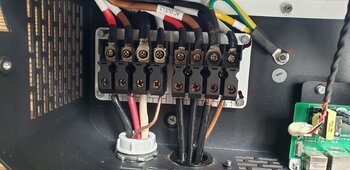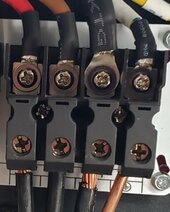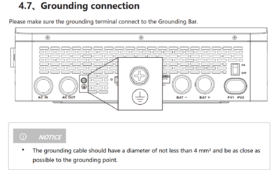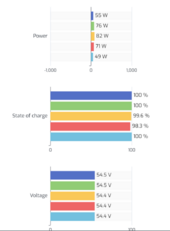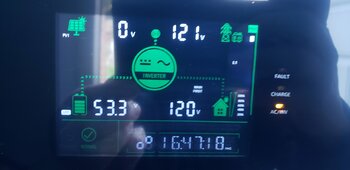Lighthouse Beacon
Following the Light
@42OhmsPA
So my wife woke me up at about 6:40AM this morning and said, "The lights are flashing".
I went and looked at the inverter and it was clicking back and forth from batts to grid, it would click to grid then 'trip' back to batts. There was 0 volts from PV. I started turning off loads from the inverter and it stopped and went to utilities. I slowly added loads back to the inverter and it was fine until I reached, "Shed Power" which is a buried underground line to my shed. It also started doing it again, when I turned on "Living Room Light = Microwave Out". I couldn't tell if it was shed specifically causing it or a combination of multiple circuits on.
We did get a lot of rain this morning, the most since shed has been added to the panel.
I am theorizing I have a bad ground on the line to the shed? I am not sure where to start here. I know my wife woke up at 6AM and started getting ready for work. I was in SOL mode with 35% left on my batteries.
I ask her what she did this morning, she said she used the microwave, that's about it.
Curious if you guys see anything in my graphs that may indicate what happened. I have nothing on the inverter right now until I can be home with it to see what happens.
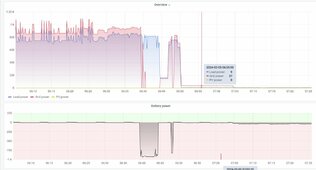
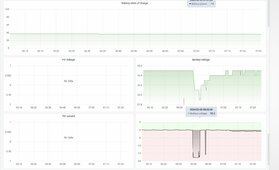
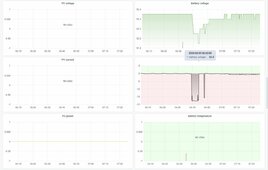

So my wife woke me up at about 6:40AM this morning and said, "The lights are flashing".
I went and looked at the inverter and it was clicking back and forth from batts to grid, it would click to grid then 'trip' back to batts. There was 0 volts from PV. I started turning off loads from the inverter and it stopped and went to utilities. I slowly added loads back to the inverter and it was fine until I reached, "Shed Power" which is a buried underground line to my shed. It also started doing it again, when I turned on "Living Room Light = Microwave Out". I couldn't tell if it was shed specifically causing it or a combination of multiple circuits on.
We did get a lot of rain this morning, the most since shed has been added to the panel.
I am theorizing I have a bad ground on the line to the shed? I am not sure where to start here. I know my wife woke up at 6AM and started getting ready for work. I was in SOL mode with 35% left on my batteries.
I ask her what she did this morning, she said she used the microwave, that's about it.
Curious if you guys see anything in my graphs that may indicate what happened. I have nothing on the inverter right now until I can be home with it to see what happens.




Last edited:



